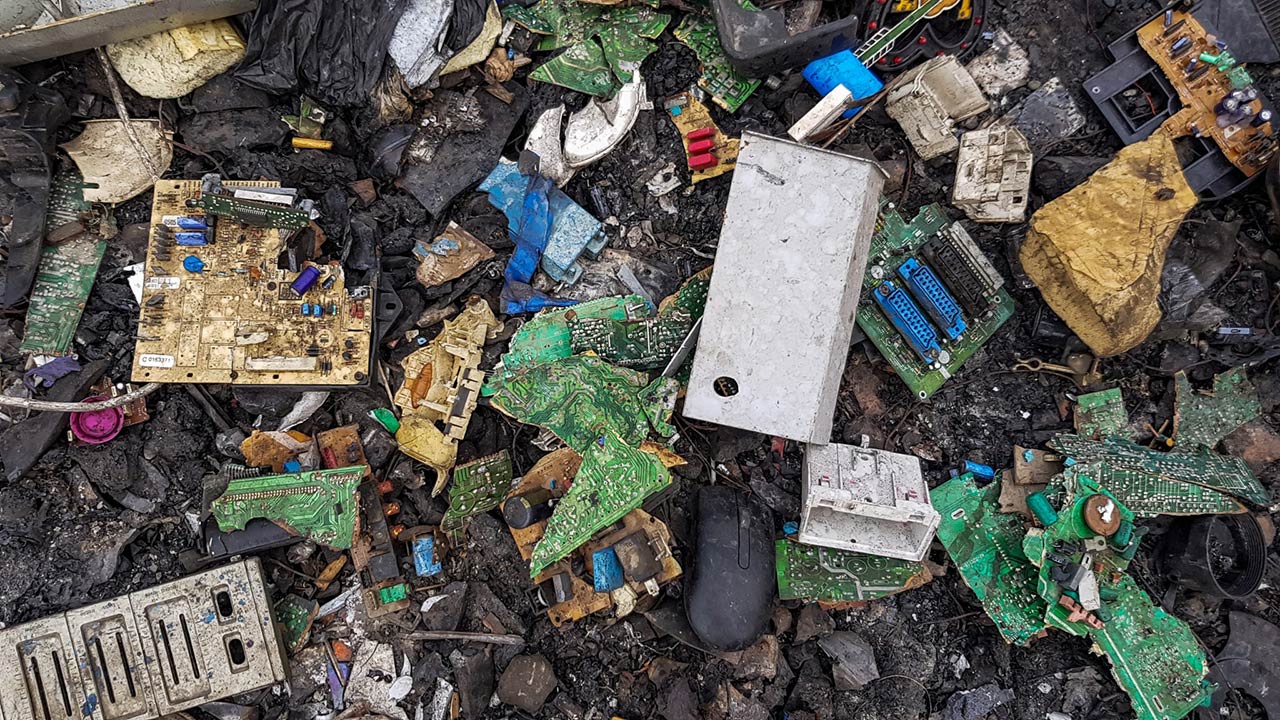In 2019, the world generated a striking 53.6 million tons of e-waste, an average of 7.3 kg per capita and the equivalent of 350 cruise ships the size of the Queen Mary 2. This statistics from the recently published “Global e-waste monitor 2020” by the United Nations University highlights the gravity of the situation and the need for urgent action to mitigate one of the fastest growing waste stream on the planet.
Not only is e-waste increasing year after year and projected to reach 74.7 million metric tons by 2030 which would come at extremely high environmental and health costs, it’s also treated very differently depending on where it’s generated.
Europeans produce the most e-waste per capita in the world
While the largest contributor to e-waste in 2019 is Asia (24.9 Mt) followed by the Americas (13.1 Mt) and Europe (12Mt), the old continent takes the first place when it comes to e-waste generation per capita. On average, Europeans produce 16.2kg a year while Asia and Africa generated just 5.6 and 2.5 kg per capita, respectively.
While some of it is discarded in waste bins and incinerated or landfilled (around 8%), 17% is recycled and between 7-20% exported as second hand products or e-waste, the whereabouts of the rest of the waste generated in high income countries is unknown. Considering the significant health and environmental hazard posed by discarded electronic equipment, this is more than concerning.
The growing amount of e-waste is mainly fueled by higher consumption rates, short life cycles, and few repair options
Recent case studies done by the European Environment Agency of four different electronic product groups show all have average actual lifetimes that are at least 2.3 years shorter than either their designed or desired lifetimes. A smartphone for instance lasts on average 2 years when Europeans would prefer to keep them for 5 years or more.
There are many reasons for such short lifespan. From common design issues related to batteries to lack of software updates, our electronic products are often replaced before becoming completely out of use. And it doesn’t help that some manufacturers are making repair increasingly difficult and expensive through monopolies on spare parts and lack of repair information.
57% of Europeans for instance declared not fixing their phones when they break because of a lack of affordable or available repair options.
Recycling can’t keep up, we need the Right to Repair
Meanwhile, the amount of e-waste properly collected and recycled in 2019 was 9.3 Mt which barely represents 17% of the total of the e-waste generated.
While recycling rate grew with 1.8 Mt since 2014, the total e-waste generation increased by 9.2 Mt over the same period. It clearly can’t keep up with the quantity of waste we’re generating, especially in Europe.
This is why the Right to Repair European campaign made of 36 members from 14 countries is advocating for a universal Right to Repair that would lead to:
- products not only designed to perform, but also to last and to be repaired whenever needed
- access to affordable spare parts and repair manuals for everyone for the entire lifetime of a product
- information on product repairability made available at the point of purchase to consumers as well as repairers
Such measures adopted urgently would allow the 8 in 10 Europeans who think manufacturers should be required to make it easier to repair electronic devices or replace parts to extend the lifetime of their products and save money while mitigating the global stream of electronic waste.
Europe has a historic opportunity to lead this fight through the various initiatives announced in the Circular Economy Action Plan – but the clock is ticking!
Join our push for more repairable products, by signing up for campaign updates, and donating to support our work!
Image from Flickr


Just a passing thought, could there not be a revenue stream for companies to make available the tools needed to repair their products ? The carbon footprint of a set of tools to repair an existing appliance would be a lot less than buying a new one and also this would help offset loss of sales of new products.